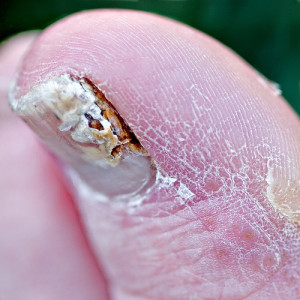 There is a wide variety of techniques and methods that anyone can use as a guide on how to cure advanced toenail fungus. The condition is fairly common and can affect anyone regardless of age and gender. Like all conditions, toenail fungus is best treated when it first appears and while the symptoms are still mild. However, when left without any treatment, the condition can worsen, making it more difficult, but not impossible, to treat.
There is a wide variety of techniques and methods that anyone can use as a guide on how to cure advanced toenail fungus. The condition is fairly common and can affect anyone regardless of age and gender. Like all conditions, toenail fungus is best treated when it first appears and while the symptoms are still mild. However, when left without any treatment, the condition can worsen, making it more difficult, but not impossible, to treat.
Symptoms of Advanced Fungal Infection
Toenail fungal infection in the advanced stage usually exhibits the following symptoms:
- Flaky, thickened and yellowish toenails (the skin surrounding the nail may appear whitish/gray or yellowish and flaky)
- Deformed toenails
- Brittle nails that easily crumble and peel off, and have ragged edges
- Severe itching that may result in a weeping wound that is susceptible to bacterial infection
- Recurring fungal infection
How to Cure Advanced Toenail Fungus
Toenail fungal infection is contagious. If you have it, you have the potential to infect others and even re-infect yourself. You could, for example, infect the toes of the other foot that had not been infected initially. You could even spread the infection to other parts of the body, such as your fingernails.
To start the process of healing, use an antifungal soap or foot wash and always keep feet dry after a bath. Any cloth or towel you use to wipe your feet with should be washed immediately with soap and hot water.
Do not share personal items such as shoes, slippers and towels with anyone else. Avoid getting a professional pedicure to avoid infecting other people. Chances are, you will be refused anyway since reputable salons have a strict policy against clients who have an infectious condition. If you must wear nail polish, avoid commercial products sold at supermarket shelves and beauty product counters. Choose nail polish products that are formulated with antifungal medications. These will fight off the infection while providing your toenails with a pretty cover.
Prescription Medication
Advanced toenail fungal infection should be treated with extra-strength antifungal medication that is usually available only through a doctor’s prescription. Depending on the severity of your condition, you might expect any or a combination of the following treatments:
- Topical antifungal cream or lotion
- Antifungal pills
- Laser Treatment
Topical antifungal treatment is effective for infection on the surface of the nail. If the infection is underneath the nail, it is much more difficult to treat because the medication cannot reach the infected area. In the case of antifungal tablets, the medicine is delivered through the bloodstream and is therefore effective for treating hard-to-reach spots in the toes. These medications must be taken as prescribed and treatment must be completed in order to ensure its success.
For severe infections that are too stubborn to react positively to topical and oral medications, patients may have better chances with a laser treatment. Laser can penetrate the toenail and destroy the fungus underneath, thus paving the way for effective healing. Several sessions may be required depending on how advanced the condition is.
When to Call the Doctor
Any infection that worsens must be checked by a doctor. If you have diabetes, or any disease or disorder that will make healing slower, see a physician or a podiatrist for advice and guidance. He or she will be able to show you how to cure advanced toenail fungus using the most effective methods available.


